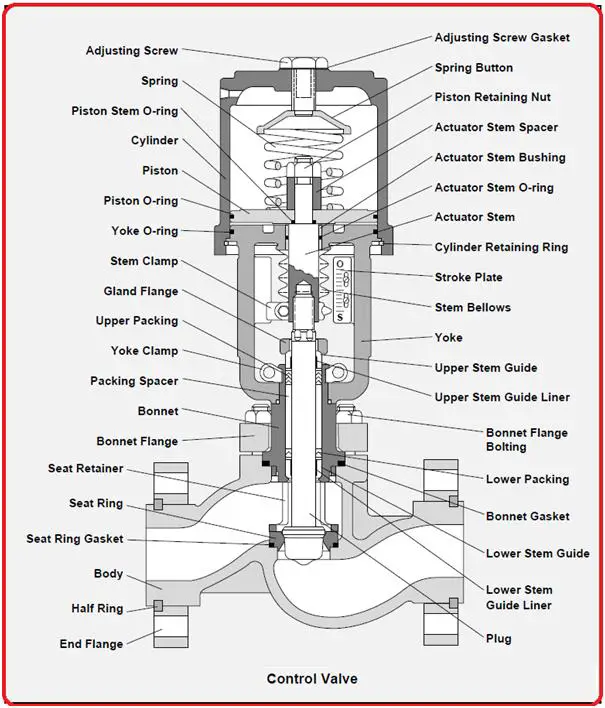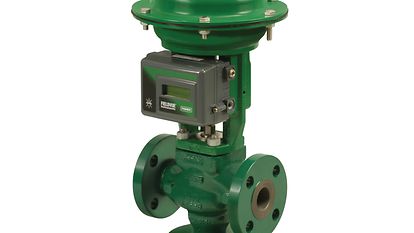How Control Valves Effect Power Effectiveness in Industrial Settings
How Control Valves Effect Power Effectiveness in Industrial Settings
Blog Article

Maximize Energy Cost Savings and Comfort With Advanced Structure Automation Controls
In the world of modern architecture and facility management, the integration of advanced building automation controls stands as a crucial development. The merging of innovation and sustainability has actually birthed a brand-new age where power performance, convenience optimization, and functional streamlining are no longer remote goals yet possible facts. By taking advantage of the power of automation, structures can adapt, respond, and advance in ways that were as soon as unthinkable. The possibility for considerable energy cost savings and boosted convenience is not just a possibility however a guarantee waiting to be satisfied. This standard change in structure monitoring holds the essential to opening a world where environmental conscientiousness and owner health harmoniously exist side-by-side within the walls of our structures.
Energy Effectiveness Conveniences
Power performance advantages can dramatically minimize power usage and operational costs in buildings. Energy-efficient systems, such as innovative structure automation controls, can enhance the use of resources like heating, air conditioning, and lights, leading to lower energy costs over time.
In addition, improved energy performance can extend the lifespan of building tools and systems. By operating more successfully, heating and cooling systems, lighting components, and various other building parts experience less wear and tear, leading to reduced upkeep and replacement prices. Furthermore, energy-efficient structures often regulate higher residential property values and rental rates, providing lasting financial advantages to owners.
Moreover, energy performance can improve occupant comfort and performance. Effectively managed indoor atmospheres with optimal illumination and thermal problems create an even more helpful and enjoyable work space, resulting in boosted staff member fulfillment and performance. Generally, the power efficiency benefits related to innovative structure automation controls are multifaceted, incorporating cost financial savings, ecological stewardship, and resident health.
Boosted Convenience Control
Enhancing convenience control in structure environments requires an advanced integration of sophisticated automation systems for optimum occupant well-being. By using innovative building automation controls, facilities can customize the interior setting to fulfill the details demands and choices of occupants. These systems enable specific policy of temperature level, air flow, and lighting, producing a comfy and effective ambience. Owner complete satisfaction and efficiency are carefully connected to thermal comfort, making it vital to have systems in position that can adjust to changing conditions in real-time.
Boosted convenience control goes past basic temperature level changes. It consists of features such as customized settings, tenancy sensing units, and natural light use to produce a dynamic and receptive setting. By integrating these sophisticated controls, structures can not only boost comfort but additionally enhance power effectiveness by optimizing system procedures based on real occupancy and use patterns. Eventually, focusing on resident comfort via advanced automation systems brings about a more delightful and much healthier indoor atmosphere.
Operational Efficiency Improvements

Moreover, the application of real-time tracking and analytics devices allows structure drivers to identify power ineffectiveness and operational anomalies immediately. By continually keeping an eye on power usage patterns and system efficiency metrics, changes can be made in real-time to optimize energy usage and make sure peak operational effectiveness. control valves. Furthermore, including demand reaction strategies right into structure automation controls can better enhance operational effectiveness by dynamically adjusting energy use based upon grid problems and rates signals
Indoor Climate Optimization
Reliable interior environment optimization is a fundamental aspect of building automation controls, making sure residents' convenience and wellness while taking full advantage of power financial savings. By making use of sophisticated sensing units and controls, developing automation systems can constantly check and readjust temperature, humidity levels, air quality, and air flow to develop an optimal indoor environment. Maintaining over at this website regular and comfy problems not just boosts resident fulfillment yet additionally enhances efficiency and general health.
Indoor climate optimization also plays an important role in energy effectiveness. By fine-tuning home heating, air conditioning, and air flow systems based on real-time data and occupancy patterns, building automation controls can significantly lower power intake - control valves. Carrying out approaches such as demand-controlled air flow and thermal zoning can help decrease energy waste while making certain that each area of the building obtains the needed conditioning.

Sustainable Atmosphere Creation
Building automation controls not just enhance indoor climate conditions for power performance and passenger comfort however also lay the foundation for developing a lasting setting via calculated administration of resources and systems. By incorporating advanced building automation technologies, such as sensing units, actuators, and intelligent software application, facilities can check and adjust power usage in real-time to minimize waste and lower their carbon impact. These systems allow predictive upkeep, recognizing potential concerns prior to they escalate and enhancing tools efficiency to enhance long life and effectiveness.
Additionally, sustainable setting development expands beyond power management to encompass water preservation, waste reduction, and interior air quality renovation. Structure automation controls can control water use, find leaks, and make certain appropriate garbage disposal techniques, adding to overall sustainability initiatives. In addition, by managing and monitoring air flow and purification systems, these innovations boost occupant health and wellness and productivity while decreasing power consumption visit related to a/c procedures.
Conclusion
To conclude, advanced building automation regulates offer substantial benefits in terms of energy financial savings, comfort control, functional performance, indoor environment optimization, and producing a sustainable environment. By applying these controls, structures can attain ideal efficiency while reducing energy usage and enhancing owner comfort. It appears that the usage of innovative automation technology is vital in boosting structure performance and producing a much more lasting future.
Energy performance benefits can significantly lower energy intake and operational prices in structures. Generally, the power performance advantages linked with innovative structure automation controls are diverse, including cost savings, environmental stewardship, and occupant well-being.
Additionally, incorporating need browse around here action methods into structure automation controls can further enhance functional effectiveness by dynamically adjusting power use based on grid problems and pricing signals.
Structure automation regulates not only optimize interior climate problems for power efficiency and passenger comfort however also lay the foundation for producing a lasting environment via calculated management of sources and systems.In conclusion, progressed building automation regulates offer significant advantages in terms of energy financial savings, comfort control, functional effectiveness, interior environment optimization, and creating a lasting environment.
Report this page